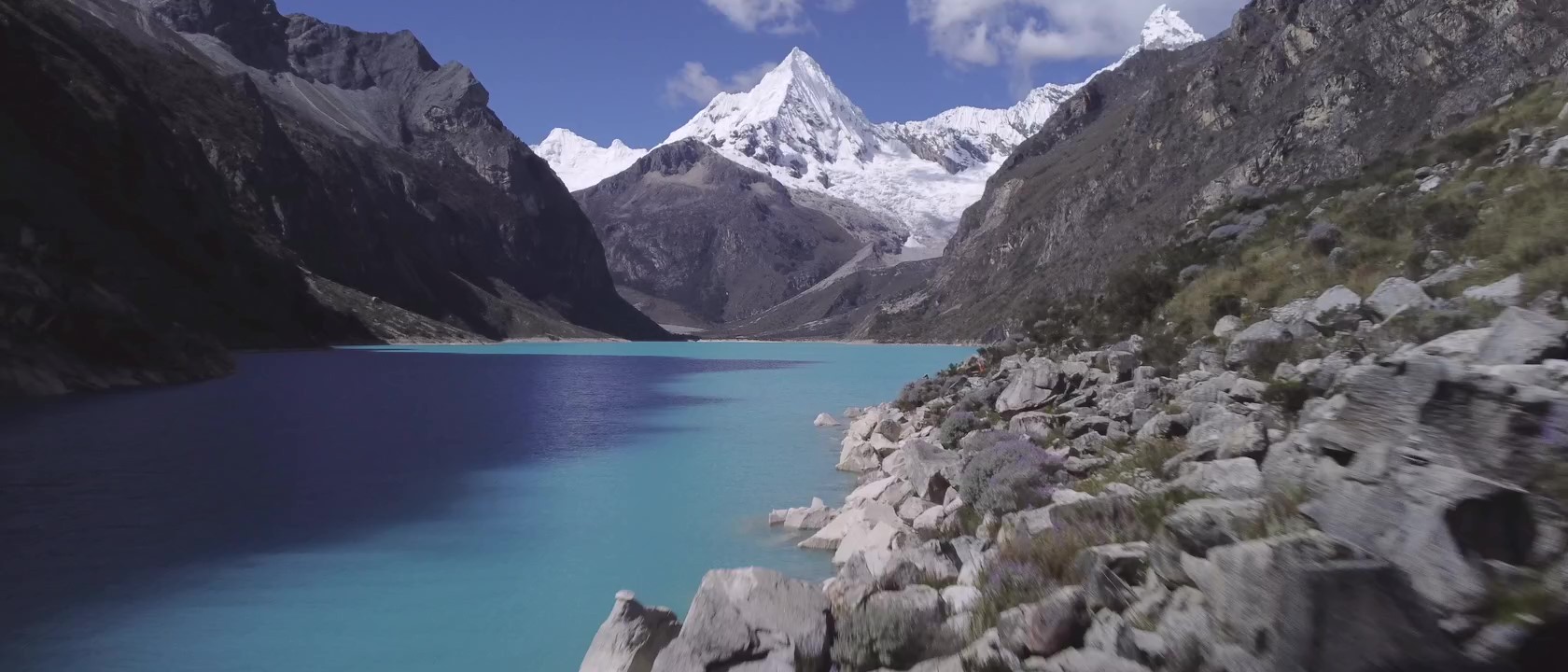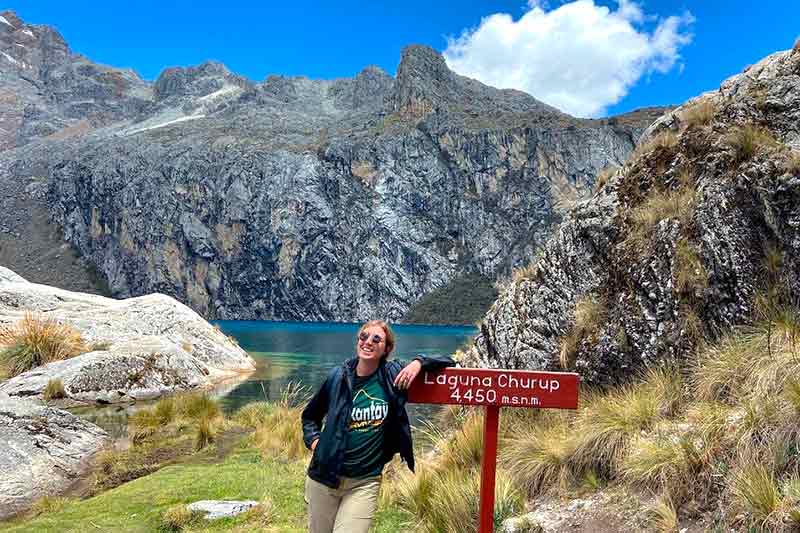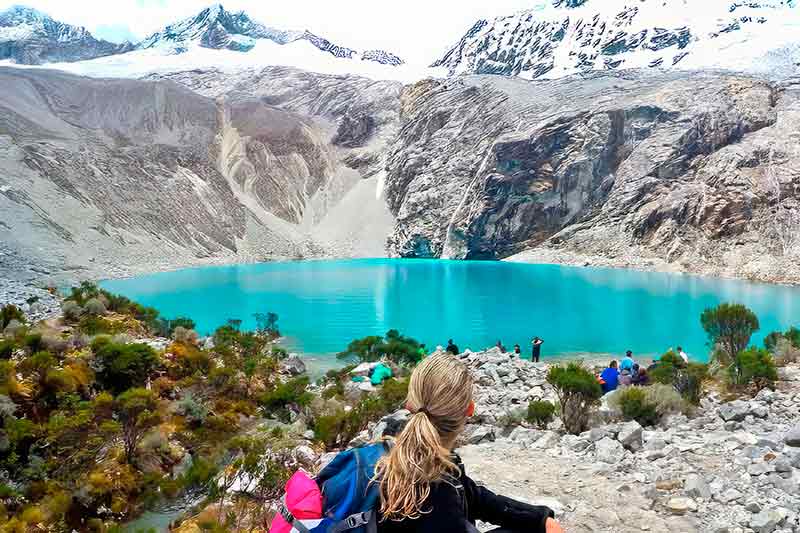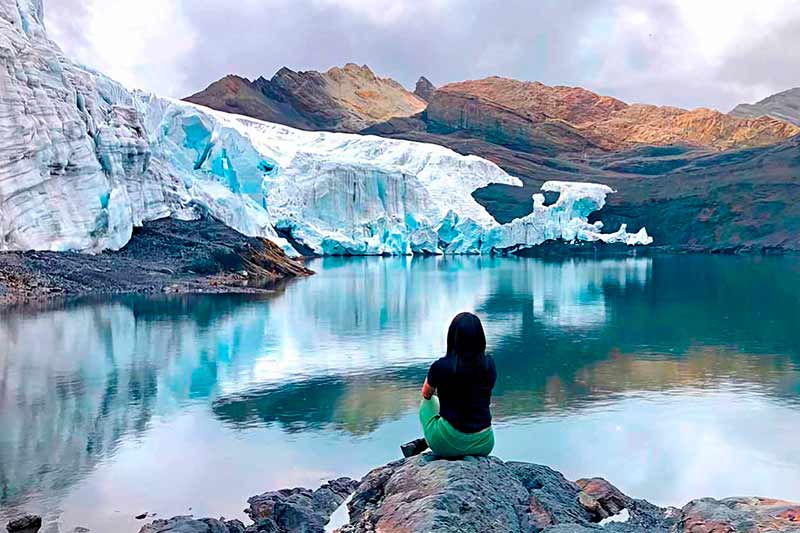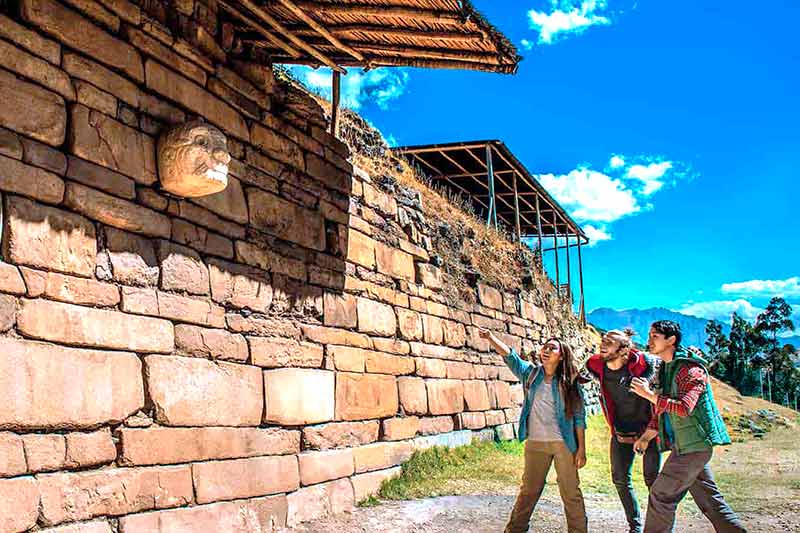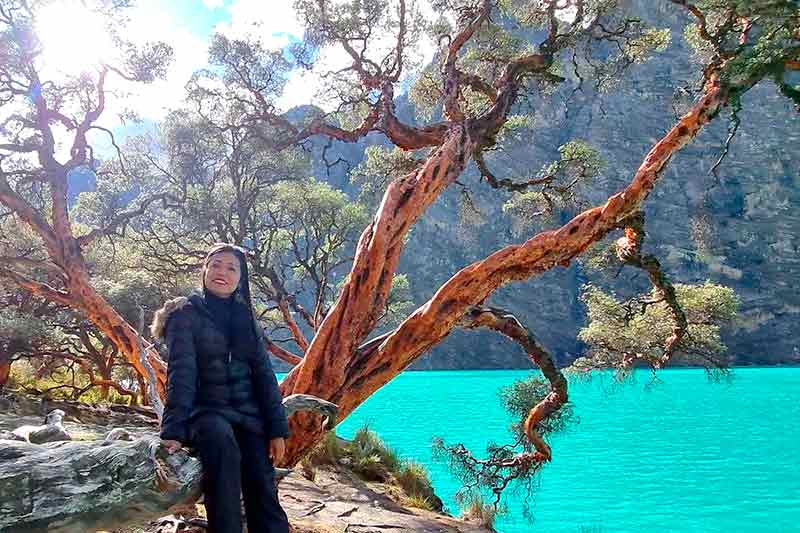Tours that include Ancash (Huaraz)
The Ancash region and its capital the city of Huaraz have some of the best tourist experiences in Peru. Huaraz (3,052 meters above sea level) especially offers some of the most challenging and exciting hiking routes in the country. The routes that run through the Cordillera Blanca and the Huascarán National Park stand out. There you can see spectacular landscapes such as the colorful lagoon of Churup, lagoon 69, the Pastoruri snow-capped mountain, the archaeological site of Chavín de Huántar or even the Huascarán, the highest snow-capped mountain in Peru. Learn about the tours included in the Áncash region!
Tour prices in Ancash, Huaraz
The best way to get to know the tourist attractions of the Ancash region is through a tourism agency. The most popular tours are those that include lagoon 69, the colorful lagoon of Churup and the Llanganuco lagoon. In addition, you can visit the Huascarán National Park. Find out the prices of the main tourist destinations in the Áncash region.
Days | Tours to Piura | Foreign | Peruvian |
|---|---|---|---|
| 1 Day | Tour hike to Churup lagoon | 65 USD | 60 USD |
| 1 Day | Tour hike to Laguna 69 | 35 USD | 30 USD |
| 1 Day | Tour Pastoruri glacier | 35 USD | 30 USD |
| 1 Day | Tour Chavín of Huántar | 35 USD | 35 USD |
| 1 Day | Tour Llanganuco Lagoon | 40 USD | 30 USD |
The provinces and tourist attractions of the Áncash region
The department of Ancash has a coastal strip but the Andean mountain range is the main geography, which occupies 72% of the territory. Ancash covers 20 provinces. Its capital is the city of Huaraz, from where you can visit the different tourist attractions in the region. Get to know them!
Province | Main tourist attractions |
|---|---|
| Aija | Mulluhuanca Viewpoint, Marcaqhotu Ruins, Cochwas Ruins, Manllash Viewpoint. |
| Antonio Raymondi | Yanacocha Lagoon, Shushucocha Lagoon, Tacshmarca Archaeological Site, Shelmi Archaeological Site. |
| Asunción | Nevado de Hualcán, Copa Norte (snowy), snowy Contrahierbas, snowy Perlilla. |
| Bolognesi | The Huayhuash Mountain Range, Usgor Waterfall, the San Juan Cruz viewpoint, Chiquián town, Capillapunta archaeological site, Chiquián temple. |
| Carhuaz | Hualcán Gorge, Rajun Paquinan lagoon, 513 lagoon, Winoyo lagoon, Honcopampa Archaeological Complex. |
| Carlos F. Fitzcarrald | Río Yanamayo, Main Square of San Luis, Pakayacu bridge, Konchucos. |
| Casma | Cerro Sechín Archaeological Complex and Max Uhle Site Museum, The villages Archaeological Zone, Huaro spa, Tortugas spa. |
| Corongo | Rutu lagoon, Carangay lagoon, Huinchus lagoon, snowy Rosko Grande, snowy Pajra. |
| Huaraz | Nevado Pastoruri, Cordillera Blanca, Huascarán National Park, Churup lagoon, Ichic archaeological site, City of Huaraz. |
| Huari | Chavín de Huántar archaeological complex, Marca Jirca Ruins, Yunguilla petroglyphs. |
| Huarmey | Circuit of beaches of Huarmey, Los Gavilanes, Lomas de Cóndor, Punta Lobitos port. |
| Huaylas | Catucancha Viewpoint, Archaeological remains of Tumshucaico, Amauta Museum of Ancashino Art, Nevado de Huandoy, Nevado Huascarán, Quebrada Santa Cruz, archaeological center of Baños. |
| Marshal Luzuriaga | Nevado Taulliraju, Nevado Chacrarraju, Garcilaso pyramid, Huecrorocha lagoon. |
| Ocros | Pampa Marca archaeological site, Misquipuquio Lagoon, Jaracocha Lagoon, Yanacocha Lagoon, Pampa de Chonta. |
| Pallasca | Pashas archaeological site, La Galgada archaeological site, Chuncana archaeological site. |
| Pomabamba | Pomabamba thermal baths, the Amanicos caverns of Kurwas, archaeological remains of Awkin Marca, archaeological remains of Rayo Gaga. |
| Recuay | Conococha (lagoon), Querococha, Puya Raymondi forest, La Gruta de San Francisco, Archaeological remains of Pueblo Viejo. |
| Santa | Punkurí archaeological complex, Pañamarca citadel, Waullac archaeological complex, Huaca de San Pedro, Castillo Santa, Serpent Hill. |
| Sihuas | Archaeological remains of Cipa, Archaeological remains of Pumahuasi, church of Virgen de las Nieves of Sihuas, Inca platforms of Cashmarca. |
| Yungay | Llanganuco Lagoon, Nevado Huascarán, Campo Santo, Guitarrero Cave, Huansakay Ruins. |
All the activities you can do on your trip to the Áncash region!
Áncash offers different tourist attractions that are visited by both Peruvian and foreign tourists. The main destinations are located around the city of Huaraz. Find out what activities you can do during your visit to Áncash!
- Hiking routes – The Cordillera Blanca and Huascarán National Park offer some of the best hiking routes in Peru. There you can see snow-capped mountains, lagoons, mountains, rivers, waterfalls, historical sites, as well as the characteristic flora and fauna of the region.
- Natural landscapes – In Áncash you can see some of the most spectacular natural landscapes in Peru: from the spas of Huarmey to the high mountains and snow-capped mountains of Huascarán and the Cordillera Blanca. The Churup, Llanganuco and 69 lagoons also stand out.
- Historical sites – Ancash was occupied by very ancient human groups, from the Huaylas to the Wari and Incas. There, to this day, important archaeological sites survive such as the Chavín de Huántar complex, Chanquillo, Waullac, las Aldas and more.
What tourist services does a tour to Áncash have to include?
The main tourist attractions in the department of Áncash include a visit to the city of Huáraz, the Llanganuco lagoon, the laguna 69, the colors of Churup, Chavín de Huántar and more. The services must be serious, safe and well organized by a formal tourism agency. These should include:
- Pick up the tourist from their hotel in the city of Huaraz.
- Tourist transportation in round trip service.
- Entrance to the different tourist attractions to visit.
- Professional bilingual tour guide service (Spanish or English).
- Tourist hotel or camp (for tours and treks of more than 1 day).
The main tourist attractions of the Áncash region (Huaraz)
The Andean and mountainous geography of the Áncash region offer some of the most popular tourist attractions in Peru. Places such as the Huascarán National Park, the Chavín de Huántar archaeological site, the Pastoruri snow-capped mountain and more stand out. Get to know them!
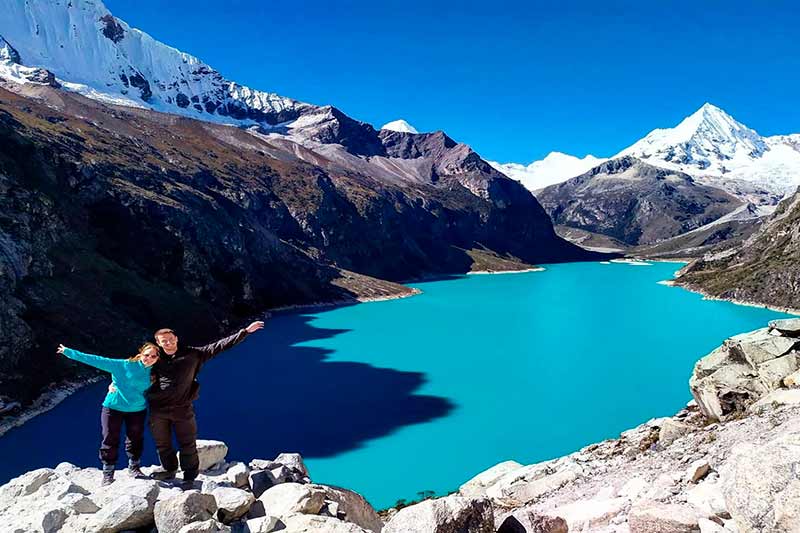
Huascarán National Park
The Huscarán National Park is a chain of mountains and snow peaks in the central part of Peru. It is famous for hosting the highest snow-capped mountain in the country, Huascarán (6,768 meters above sea level). There you can take incredible hiking routes, some of the most famous in Peru.
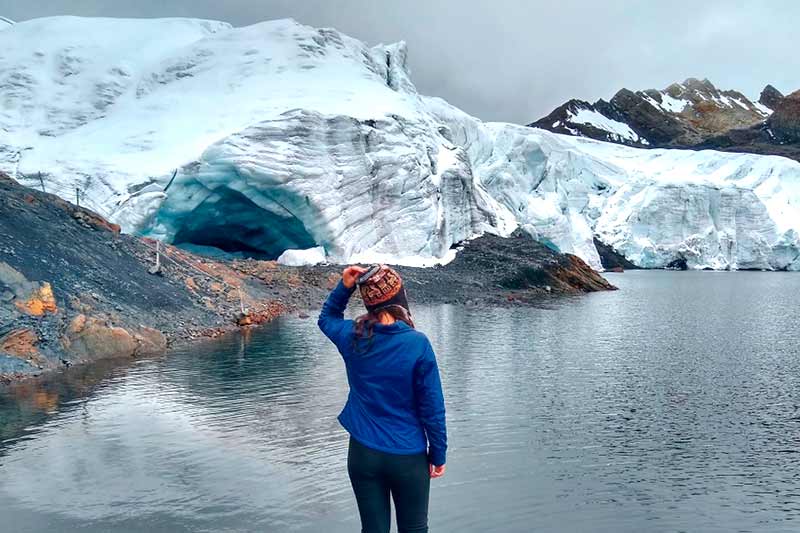
Nevado Pastoruri
The Pastoruri snow-capped mountain is one of the most famous in the so-called Cordillera Blanca in the Áncash region. It is located at 5,240 meters above sea level with a prominence of 120 meters. Your visit offers amazing landscapes as well as an example of the consequences of climate change due to the decrease in snow.
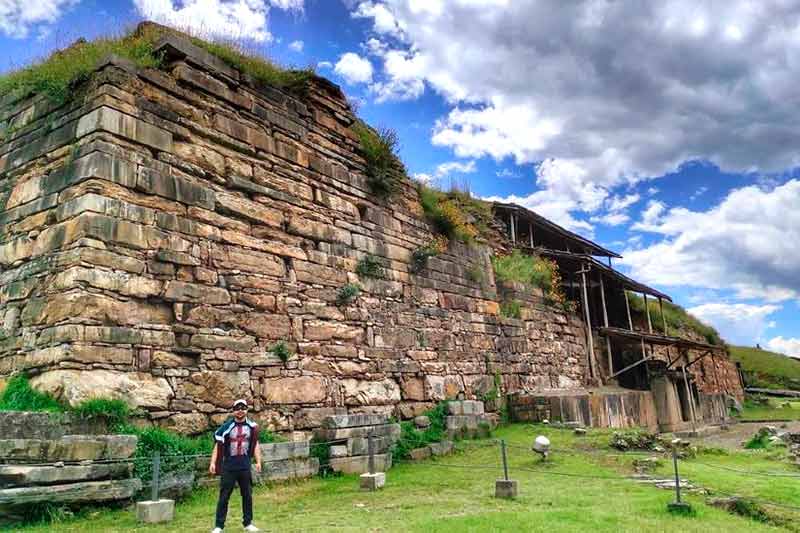
Chavín de Huántar
Chavín de Huántar is one of the most famous archaeological sites in Peru. It is located in the district of Chavín and in 1985 it was declared a World Heritage Site. It belonged to the Chavín culture as an administrative and religious center. The heads clavas and the Lanzón Chavín are famous.
Questions and answers about the trip to the Áncash region (Huaraz)
The department of Áncash and its capital of the city of Huaraz are visited by Peruvian and foreign tourists. However, there are still many questions about its tourist destinations, hotel services, restaurants and more. Learn more about the Áncash region in Peru!
What are the best tourist attractions in the department of Áncash?
The main tourist attractions of the department of Áncash are: the Huascarán National Park, the Pastoruri snow-capped mountain, the Chavín de Huántar archaeological complex, as well as the Churup, 69 and Llanganuco lagoons.
What are the best beaches in the Áncash region?
The best beaches and resorts in the Áncash region are: Huarmey, Chimbote, Casma, Tuquillo and Tortugas.
What is the weather like in the city of Huaraz?
Huaraz is located in the Andean region of central Peru, at an altitude of 3,052 meters above sea level. Due to this and its proximity to the Cordillera Blanca, it has a temperate climate with sunny days and cold nights. The maximum temperature reaches 23ºC. The minimum temperature drops to 3ºC.
How far is Huaraz from Chavín de Huántar?
The archaeological site of Chavín de Huántar is one of the main tourist attractions in the Áncash region. It is located 105 kilometers (2 hours 30 minutes by car) from the city of Huaraz, capital of Áncash.
How to get from Lima to Ancash?
The city of Lima is located 402 kilometers from the city of Huaraz, capital of the department of Áncash. You can arrive by interprovincial bus (8-hour trip) or by plane (1-hour trip).
How much does the entrance fee to Huascarán National Park cost?
The entrance ticket to Huascarán National Park for a 1-day visit costs 12 soles for Peruvian tourists and 30 soles for foreign tourists. The ticket for 3-day excursions costs 30 soles for Peruvian tourists and 60 soles for foreign tourists.
What are the best hiking routes in Áncash?
In the Áncash region there are many options for hiking routes, including: Trekking to the Huayhuash Mountain Range (10 days), Trekking Cedros Circuit – Alpamayo (9 days), Trekking Santa Cruz (4 days) and Trekking Santa Cruz (4 days). .
How high is the city of Huaraz?
Huaraz is the capital of the Áncash department in the central highlands of Peru. It is located at an altitude of 3,052 meters above sea level.
What are the best hotels in Huaraz?
The best hotels in Huaraz (Áncash) are: The Lazy Dog Inn a Mountain Lodge (4 stars), Jacal (3 stars), Hotel el Patio de Monterrey (3 stars), Hotel Churup (3 stars), Hotel Morales ( 3 stars) and Andes Hotel Huaraz (2 stars).
When is the best time of year to visit Huaraz and its snow-capped mountains?
The best time of year to visit the city of Huaraz is during the dry season that runs from April to October. In those months there is little rain, which makes hiking routes easier. January, February and March are the rainiest months of the year.
